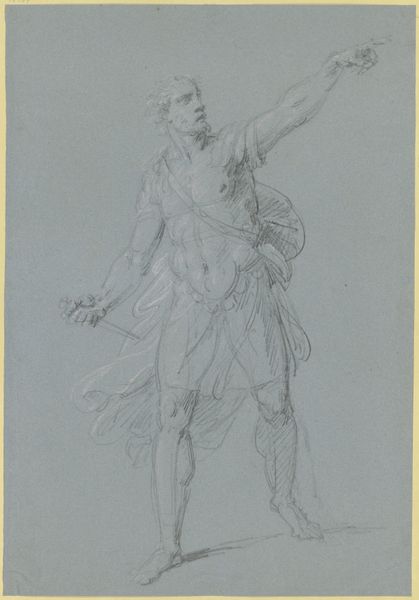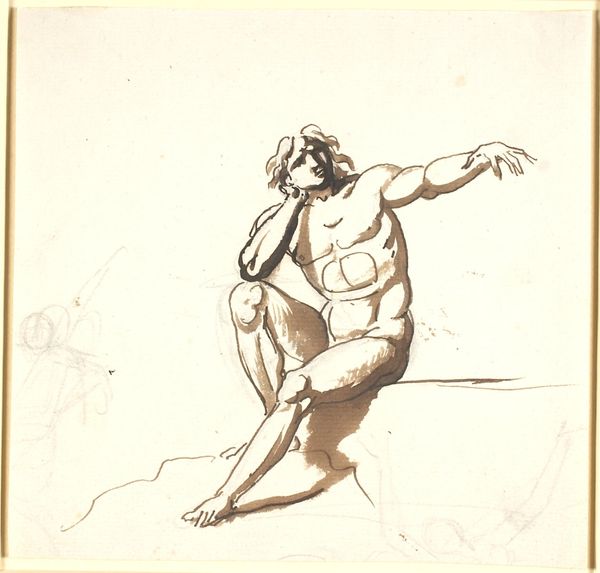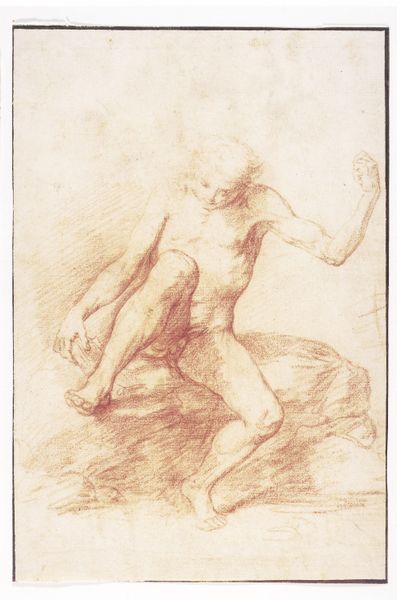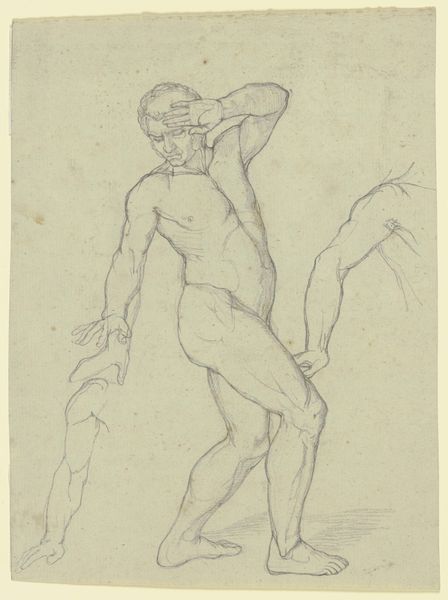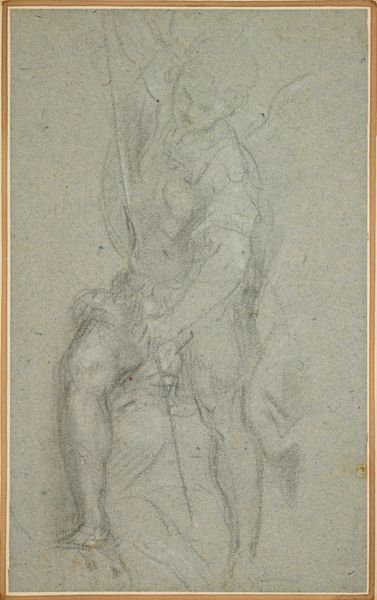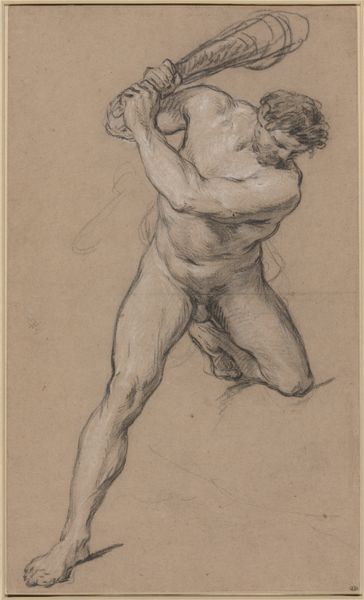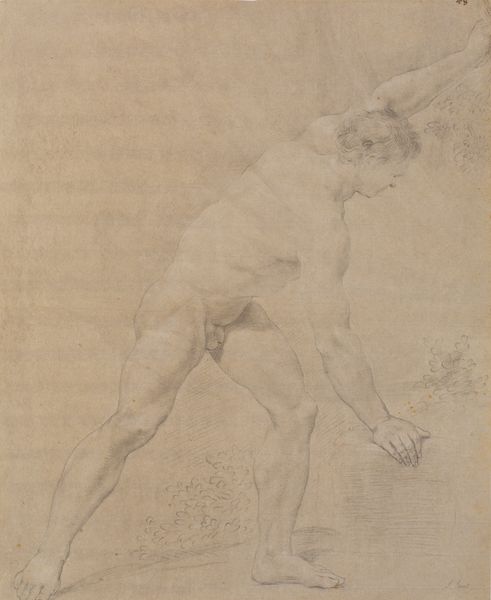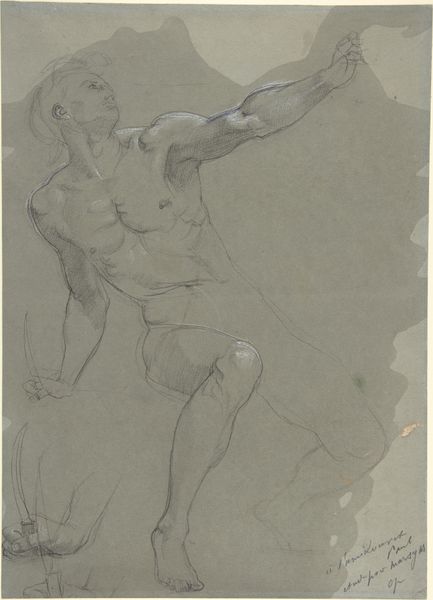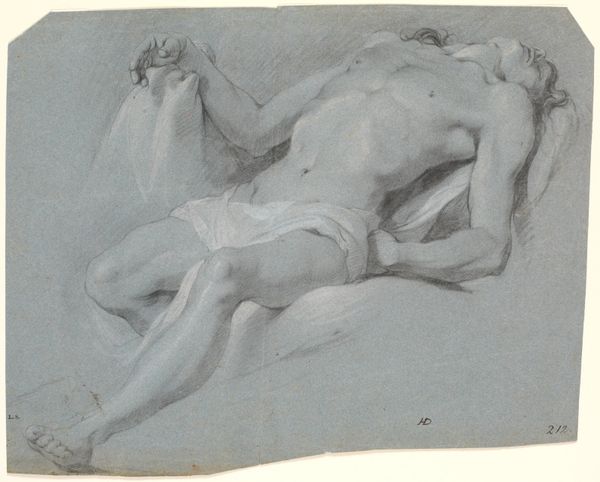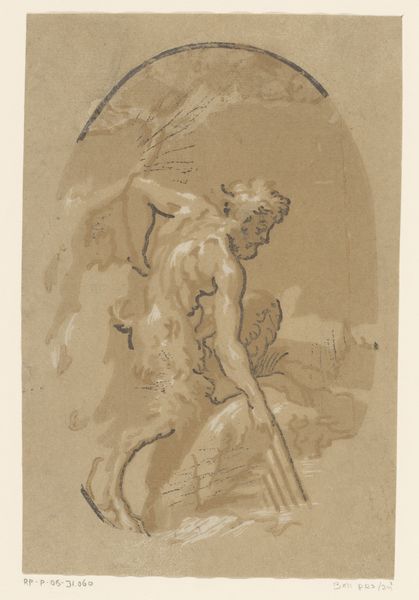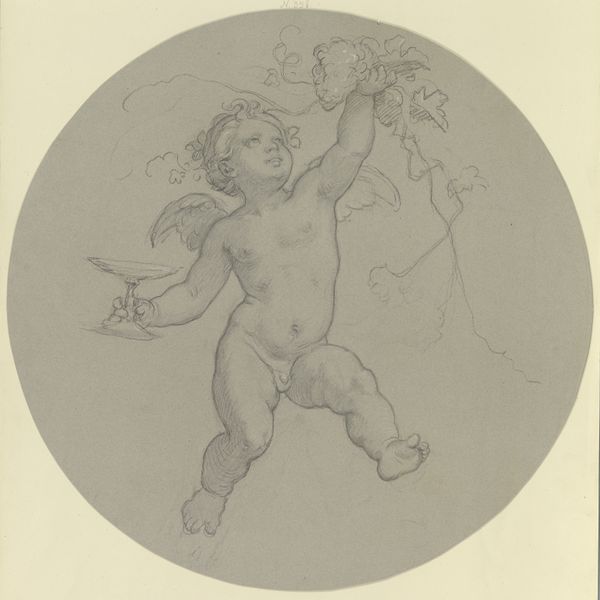
Odysseus med hævet spyd for at gennembore Polyfems øje 1625 - 1677
0:00
0:00
drawing, graphite
#
drawing
#
baroque
#
landscape
#
figuration
#
graphite
Dimensions: 388 mm (height) x 280 mm (width) (bladmaal)
Curator: Here we have Heinrich Dittmers’ “Odysseus with raised spear to pierce Polyphemus' eye,” a graphite drawing, dating roughly from 1625 to 1677. Editor: The image almost vibrates. It’s like seeing a snapshot of pure rage and focused intent. You know, like a coiled spring about to release. I feel the pent-up energy radiating off this Odysseus. Curator: Dittmers captures a pivotal moment from Homer’s Odyssey, right? That scene of cunning and brutal revenge. The fascinating thing is how this moment gains significance in light of the broader historical understanding of how art served political and ethical narratives at the time. Consider how representing a heroic figure overcoming a monstrous foe spoke to ideals of leadership and civilization that rulers and elites wished to promote. Editor: That makes sense! Though my gut reaction wasn't the sociopolitical reading of the scene. I am drawn to the humanity of it. It isn't so much about leadership for me; but seeing that look in his eye—he seems like he feels personally attacked by this cyclops. This is intimate, not about public role-playing! Curator: Interesting. I hadn't considered that perspective so intimately, but given Dittmer's other work, there could be merit to it. Especially knowing how the baroque era often depicted intense personal, religious, and emotional experiences... This lends the whole mythological narrative of Odysseus a feeling of vulnerability, no? Editor: Exactly! Even a touch of dark humor? Because it is one-eyed versus seeing-eye... and Odysseus makes his world dark. Dittmers' Odysseus isn’t just a strategist; he's someone with skin in the game, taking back agency with lethal focus. I admire the confidence that is subtly being presented within the grand scheme of the artwork's time. Curator: Indeed. When looking back on Baroque landscapes through this new lens, especially given that figurativism has now merged into them—we understand even more acutely how political and psychological the public role of artwork in society has become. Editor: Yes! Thank you for clarifying, what would be a potentially flat image for me now has a richer tapestry!
Comments
No comments
Be the first to comment and join the conversation on the ultimate creative platform.
